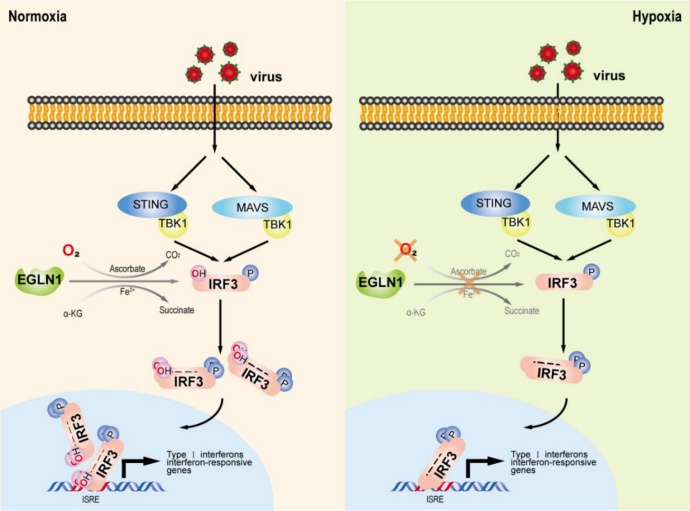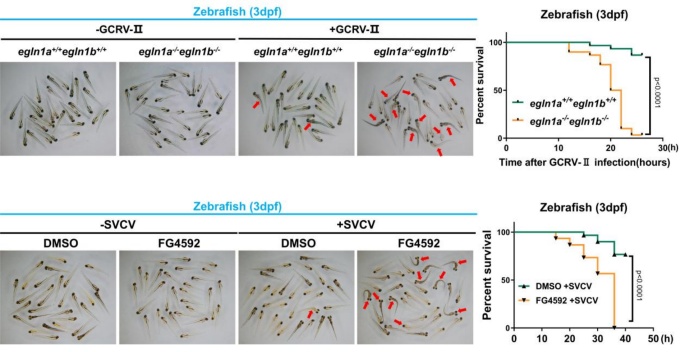Highlights
Researchers Reveal A Novel Mechanism by Which Oxygen Enhances Antiviral Innate Immunity Through Maintenance of EGLN1-catalyzed Proline Hydroxylation of IRF3
Molecular oxygen has a profound effect on organisms by providing energy during aerobic respiration and by altering the configuration and function of nucleic acids, sugars, lipids, proteins, and metabolites. Therefore, oxygen can influence inflammation and immunity through various mechanisms. However, due to the lack of feasible approaches to directly test the effect of oxygen on inflammation and immunity, how oxygen affects immunity is largely unclear.
A research group led by Prof. XIAO Wuhan from the Institute of Hydrobiology (IHB) of the Chinese Academy of Sciences identified that oxygen enhances antiviral innate immunity through maintenance of EGLN1-catalyzed proline hydroxylation of IRF3. The study was published in Nature Communications.
In this study, researchers discovered that during responses to viral infection, hypoxic conditions repress antiviral-responsive genes independently of HIF signaling. They identified that EGLN1 acts as a key mediator of the oxygen enhancement of antiviral innate immune responses.
The researchers then revealed that under sufficient oxygen conditions, EGLN1 retains its prolyl hydroxylase activity to catalyze the hydroxylation of IRF3 at proline 10. This modification enhances IRF3 phosphorylation, dimerization and nuclear translocation, leading to subsequent IRF3 activation.
Xiao’s team further utilized the mouse and zebrafish as in vivo models and discovered that mice and zebrafish with Egln1 deletion, treatment with the EGLN inhibitor FG4592, or mice carrying an Irf3 P10A mutation are more susceptible to viral infections.
This study not only reveal a direct link between oxygen and antiviral responses, but also provide insight into the mechanisms by which oxygen regulates innate immunity.

The findings of this study resemble an ancient Chinese legend, in which Carp jumps the dragon gate. Carp (the transcription factor IRF3) breathes more oxygen (the cofactor of PHD2 hydroxylase) to gain a magical power (the IRF3 hydroxylation), then jumps over the dragon gate to evolve into a dragon. Dragons use their righteous energy of justice to destroy the devils (viruses).

The working model for the role of oxygen in antiviral innate immunity

Disruption of egln1 or inhibiting egln with FG4592 treatment in zebrafish results in increased susceptibility to lethal viral infection
(Editor: WANG Hongxia)